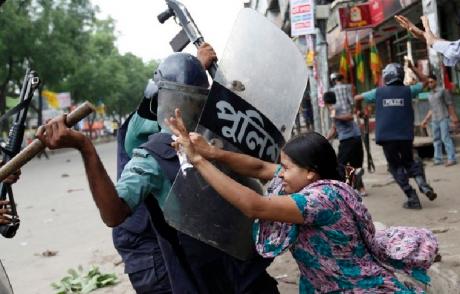A four-day strike by Bangladeshi garment workers is threatening the unequal status quo between the fashion industry and its armies of Asian workers, after a number of clothes factory owners agreed to a 77% hike in the minimum wage.
And the industrial unrest, which has closed hundreds of factories across Bangladesh and has been marked by violent clashes between protesters and police, may still not be over with many garment workers pressing for even bigger wage increases.
The Bangladesh clothing industry has been characterised by generations of below-living-wage levels of pay, death-trap working conditions and human rights abuses.
Indeed, the full extent of exploitation was highlighted by April’s collapse of the eight-storey Rana Plaza factory in Dhaka, in which more than 1,100 workers died. This followed the collapse of a similar building in the same area in 2005, which killed 64 workers, and a fire at the Tazreen Fashions factory, which killed more than 100 people.
Simmering unrest over the lack of government and business action to clean up the industry, which accounts for up to 76% of Bangladesh’s export earnings, has also been fuelled by numerous stampedes and other fires, which have also killed hundreds of people. Despite the string of tragedies, the enormous human cost of the industry has not been consistently addressed.
Today’s victory by garment workers is just a small step forward: the 77% rise – provided it is rubber stamped by the government as expected – still leaves Bangladesh with the lowest minimum wage in the world. Regardless, the factory owners fear the rise could mark the beginning of the end for the industry altogether. Given the economics of the fashion world, the major brands should be able to absorb the increased cost without any pain, if they don’t simply source production elsewhere.
But the really big question is how the Bangladeshi workers’ victory will be viewed in other countries with a significant garment industry and similar levels of simmering discontent, such as in China and India. If this stirs these workers into action, then the big fashion brands might really have something to think about.
Picture: libcom.org

